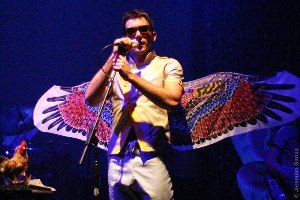The power of the media as a make-or-break element in a functioning democracy sets the foundation for a journalist’s struggle to seek out and report the honest truth. But how does the role of a free press factor into the vitality of a free society?
These concepts are examined vividly in the exceptional documentary, Democracy on Deadline by director Calvin Skaggs (Go Tell it On the Mountain) and co-producer Jed Rothstein. The documentary puts the audience in the position of several of the world’s finest journalists, complete with candid interviews and not-seen-before-in-America footage that is in one way reminiscent of Control Room, the 2004 documentary on the Arab-language satellite network, Al Jazeera International.
The filmmaking and production of “Democracy on Deadline” is outstanding, mixing uniquely regional experiences with candid exchanges and graphic footage over the course of two hours. In one memorable instance, the audience is literally in the back seat of a car driven by Ha’aretz correspondent Gideon Levy, delayed at a checkpoint at the West Bank border crossing. This is not business as usual, we’re assured, when Levy gets on his cell phone, enraged that the border guards were not previously notified and waiting for him to cross with American journalists in tow.
“Democracy on Deadline” examines issues and struggles regarding press freedom around the world through an examination of six unique (and high-profile) case studies in progress. The film profiles various journalists in different settings — all taking relatively radical approaches to reporting and exuding a vociferous enthusiasm for their responsibilities as guardians of democracy.
In one segment, Dana Priest of the Washington Post is followed by a camera as she works security insiders (watch quicktime video) at what appears to be a press event regarding the status of detainees in December 2004. We watch Priest at her desk taking notes as she digs deeper and deeper for dirt on her CIA black prisons article, nearly a year before she would publish the core piece in her package that landed her a Pulitzer.





